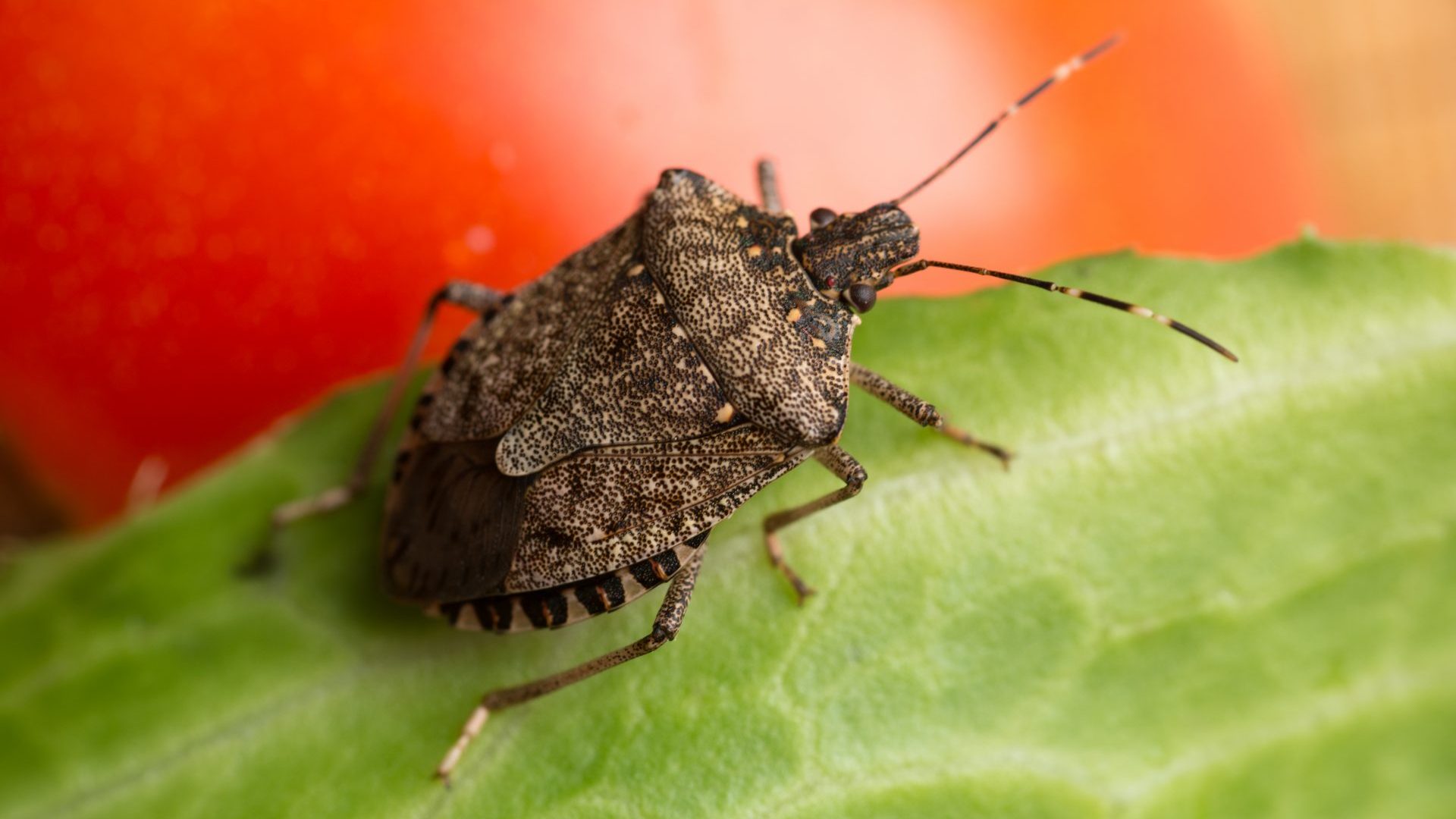I’m not easily repulsed. I barely ever wince at gory scenes in the movies or recoil from smelly feet. But there’s something about those Asian stink bugs – the brown marmorated stink bug – that makes my skin crawl every time I think about them. Native to Japan, Korea and China, this invasive species was accidentally introduced to northern Italy in 2012, 14 years after landing in neighbouring Switzerland.
When the stink bug feels threatened, it sprays a stench from its glands that smells like mothballs combined with hot plastic. The foul odour first graced my nostrils last year. I was getting ready for bed when I heard a low humming sound that I mistook for a bee. What I saw instead was a shield-shaped, brown, speckled creature I had never seen before, around 2cm in length. It wasn’t a small insect and it was flying around. The day after that, I found another five. But the real crescendo came a week later, when 30 of the things found their way into our home, the majority of them tucked away behind the curtains.
“I hate cimici so much,” our disgruntled neighbour, Rita, said. “They never used to be around and now they are everywhere. I get at least one a day, but I can’t believe how many there are during this period.”
“How do you get rid of them without them smelling?” I asked her, desperately seeking advice.
“Flush them down the toilet,” she responded.
Insect lovers – do not despair. These creatures are terrible for Italy’s native green stink bug, which I haven’t seen at all in the past two years. They also eat everything – nectarines, apples, corn; you name it, they eat it, and what they don’t consume they ruin with their corrosive saliva. In 2019 alone, €500m worth of damage was done to crops in the EU, mostly in the northern Italian regions of Emilia Romagna, Veneto, Trentino Alto-Adige, Lombardia, Piemonte and Friuli Venezia Giulia.
That was four years ago. The bug population has since spread and increased, and though no official numbers have been counted (who wants to sit there and count stink bugs?) scientists predict a further growth in their number. There are two reasons for this.
First, a detailed Swiss analysis showed that in warmer years, stink bugs can produce two generations, as they did in Switzerland in 2018. The report predicts that by 2099, 63.5% of the country could have two or more generations of the bugs each year.
Second, there has been a huge influx of cimici in both the US state of Oregon and in Queensland, Australia. What’s more, their latest target is the UK. They buzzed on to British soil two years ago, being first spotted in the gardens of London’s Natural History Museum before moving into Surrey and Essex. These smelly pests are spreading.
While flushing them down the toilet works as a means of disposal, it obviously isn’t plausible on a larger scale. Enter samurai wasps, the bugs’ east Asian enemy. As a means of natural defence, the Bel Paese is currently using this wasp enforcer to reduce the cimici population – the vespid larvae feed on the stink bug eggs. Last month, an experiment took place in Trentino Alto-Adige.
“The results are very encouraging,” the project leader, Silvia Schmidt, told the press. “It can therefore be deduced that the samurai wasp is the most effective antagonist of the Asian bug.”
If the samurai wasps get rid of these smelly nuisances, they will have done a good service. What happens to the wasps afterwards, and whether they become the new invasive species, is an open question.




